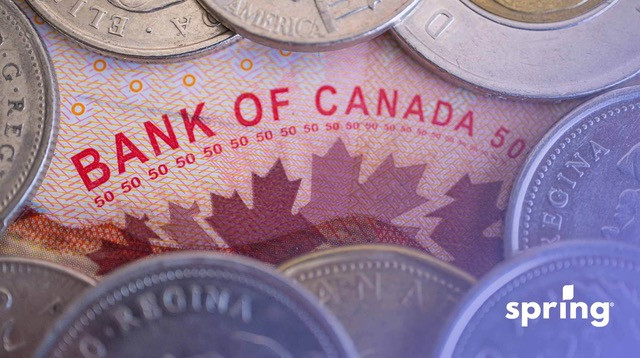Every Canadian must file their own tax return every year, even if they have a spouse. There are ways to maximize your spousal tax situation using methods like income splitting and transferring deductions between each other. Generally, the spouse with the higher income and tax bill should maximize deductions first as they’re likely to be in a higher tax bracket.
Although many Canadians dread tax season and tax planning, if you’re expecting a refund or claiming any tax benefits or non-refundable tax credits and refundable tax credits such as the GST/HST credit or Canada Child Benefit, it can work out well for you. We’re here to help you make the most of your tax return by highlighing some of the most popular tax breaks to take advantage of.
How To Maximize Your Tax Return In Canada
In order to maximize your tax return, you need to calculate your taxable income first and then lower it using as many tax deductions and credits as possible. A deduction reduces your taxable income, while a credit minimizes the amount of tax you owe.
Tax Return Deadline In Canada
You need to file your taxes by May 03, 2025 with the Canada Revenue Agency. The deadline is extended to June 15, 2025, if you’re self-employed or have a spouse or common-law partner who is self-employed. All taxes owed must be paid to the CRA by May 03, 2025.

Tax Deductions And Credits You Can Use
There are hundreds of credits and deductions you can take advantage of. Let’s look at 20 of the most common ones so you can increase your chances of getting a bigger refund.
1. Childcare Expenses
If your child is under the age of 16 years old, you may be able to claim a deduction. Childcare expenses include daycare centres, summer camps, overnight boarding schools, and caregivers such as nannies. Generally, childcare expenses must be deducted by the spouse with the lower income.
Read more: 11 Family Benefits and Tax Tips Every Parent Should Know
2. Spousal & Child Support Payments
Support payments sent to a former spouse and/or children can have a noticeable impact on your tax bill. Tax rules will vary depending on the type: spousal or child support.
3. Student Loan Interest
If you or your child is studying at a post-secondary institution, you can deduct the interest paid on a student loan if you received the loan under the Canada Student Loans Act, Canada Student Financial Assistance Act, Apprentice Loans Act, or similar laws in your province or territory. This deduction does not apply to something like a personal loan or line of credit. Apply this deduction if you owe taxes. Otherwise, it’s better to carry it forward. Interest can be carried forward and applied to any tax return for the next five years. That said, as a student, you can also claim other education-related costs up to your maximum credit amount.
4. Maximize Your RRSP Contributions
Your RRSP contribution limit is 18% of your earned income from the last tax year, plus any unused amounts from previous years. Check out your latest notice of assessment or log into your CRA My Account to find out what your RRSP contribution limit is. It’s a good idea to maximize your RRSP contribution in any way you can. You can even transfer TFSA interest gains (which are tax-free) to bump up your RRSP contribution.
If you don’t currently contribute to an RRSP (Registered Retirement Savings Plan), it’s not too late to benefit from a significant tax deduction for the 2023 tax year. You have until February 29, 2024 to contribute and receive tax slips for the current tax year. Use Wealthsimple’s free RRSP and TFSA calculators for more insights on how you can maximize your savings and verify you don’t go over your annual contribution limits.
Read more: TFSA vs. RRSP in 2022: Comparing What’s Best for You
5. Property Taxes (Owners) & Rental Payments (Tenants)
Landlords can use Form T776 to claim property taxes for the period in which a rental property was available for rent. Employed and self-employed tenants can claim partial rent payments as a home office expense if they use their home for employment or business purposes.
6. Association & Union Dues
Most professional association fees and union fees are tax-deductible, therefore lowering your taxable income.
7. Employment Expenses
You can deduct work expenses such as cell phone bills and office supplies if your employer asked you to purchase them. Educators can also claim up to $1,000 of eligible teaching supplies.
8. Tuition Expenses
Post-secondary tuition fees can be deducted. Qualifying students can check the tax form from their educational institution to learn how much tuition fees were paid this year.
9. Moving Expenses
If you moved at least 40 kilometres closer to your work, a new business, or post-secondary schooling, you can claim expenses from that move. Qualifying expenses include storage costs, travel expenses, temporary living expenses, the cost of cancelling a lease, and more.
10. Medical & Charitable Expenses
You may receive a partial deduction for charitable donations and certain medical expenses, including any medical cannabis products you purchased as a patient. Spouses should consider pooling contributions on one spouse’s tax return for maximum tax refund benefits.
Need a cash advance until you get your refund?
If you need cash today, you can skip the branch visit and get the financing you need in a few clicks. Spring Financial offers personal loans of $500 to $35,000 with flexible repayment periods. Apply in 3 minutes and get the money e-transferred to your bank account in hours, not days!
11. Home Buyers’ Amount
You can claim a $5,000 tax credit if you purchased your first home and did not live in another home owned by you or your partner in the past four years.
12. GST/HST New Housing Rebate
You may qualify for the GST/HST New Housing Rebate if you did substantial renovations or purchased or built a new home. A similar provision exists for landlords under certain conditions.
13. Provincial & Territorial Credits
In addition to federal and provincial GST/HST credits, many provinces and territories have additional credits for certain segments of the population. These include safety-related home renovations for seniors in New Brunswick to climate action incentives in British Columbia. Check out your province’s website to see what credits you may be entitled to.
14. Capital Gains – RRSP & TFSA
Always try to leverage your TFSA, also known as Tax-Free Savings Accounts, and RRSP accounts because the interest earned in these accounts is tax-free. While this won’t create a tax deduction, it will help you grow your savings. Capital gains can also be claimed on other investment income.
When it comes to capital gains, it’s important to note some rules and tax changes. When it comes to businesses and corporations, the new inclusion rate is now 66.67%. However, it’s a little different for personal capital gains.
When it comes to personal capital gains, you don’t pay any on your primary residence when you sell it. However, you do pay capital gains on any secondary properties that you own. For the first $250,000, your inclusion rate will stay at 50%. On amounts over $250,000, your inclusion rate changes to 66.67%.
15. Capital Losses
If one of your investments goes sour and you sell it at a loss, you may be able to apply it against your taxable capital gains. If you don’t have enough capital gains to cover the loss, you can claim the leftover amount as a net capital loss. Net capital losses can be used to lower capital gains in any of the three preceding tax years or carried forward to future tax years. Keep in mind you can’t deduct capital losses in tax-free accounts like RRSPs and TFSAs. Learn more about capital losses on the CRA website.
16. Self-employed Business Expenses
Small business owners can deduct various business expenses, including advertising costs, bank fees, office supplies, and travel expenses. Those who work from home can claim a portion of their utilities, insurance, and maintenance costs. Deductible amounts are based on what portion of the residence is used for business purposes.
Many who are self-employed can also claim vehicle expenses, eligible moving expenses, mortgage interest and retirement savings against their employment income. When it comes time to pay taxes, this can help you save money on your tax liability.
17. Disability Tax Credit
The disability tax credit (DTC) helps disabled individuals and family members reduce the amount of income tax they pay. To qualify for the DTC, a medical practitioner must certify you’re living with a severe mental or physical disability. Payment amounts vary by province, but if you qualify for this tax credit, it could open the door to other benefits.
18. Home Office Expenses
Did you work at home during the pandemic? If so, the CRA has implemented a new temporary flat rate method that makes it easier to claim deductions for home office expenses. You can claim $2 for each day you work from home, up to a maximum of $500 (250 working days). There is also no need to calculate the size of your workspace, keep supporting documents, or submit Form T2200. Unfortunately, 2023 was the last year you could use the temporary flat rate.
Since the temporary flat rate method has concluded, you now need to use the detailed method in order to claim your work-from-home expenses. While this method is a little more complicated, it can result in a larger tax credit.
19. Canada Workers Benefit
If you’re a low-income worker, you can claim the Canada Workers Benefit (CWB) when you file your taxes. The refundable tax credit provides up to $1,428 for single individuals and $2,461 for families. It also includes a disability supplement if you have an approved Disability Tax Credit Certificate (Form T2201) on file with the CRA. If you qualify, you can request an advance payment, which allows you to receive half of your benefit in four separate payments.
Read more: Canada Workers Benefit (CWB): How It Works, Eligibility & Advance Payments
20. Canada Training Credit
The Canada Training Credit supports workers over age 26 by reducing barriers to professional development. It offers $250 every year ($5,000 lifetime limit) for eligible tuition and other course fees.
21.GST/HST Credit
If you file your annual income tax return and are eligible, you could receive a tax-free quarterly payment that helps offset the cost of GST and HST in Canada. This is available to those with a low or modest income that falls within the annual income requirements. If you don’t file your income tax on time, you could risk missing or receiving your GST payments late.
22. Canada Child Benefit
The Canada Child Benefit is a federal monthly payment given to those who are eligible and have children under the age of 18. While this payment is federal, it can also include any child disability payments and provincial/territorial benefits that you may qualify for.
How much you receive from these benefits depends on how much your annual household income is. There is a maximum amount from the CCB that you can receive, and then, as your income increases, the amount decreases. Unlike the rest of the tax credits, you do need to apply for this benefit once when your child is born. From there, you’ll automatically start receiving payments when you file your annual income tax return every year.
23. Child Disability Benefit
The Child Disability Benefit is another tax-free monthly payment given to those who care for a child who is under 18 and has a severe and prolonged impairment in their physical or mental functions. However, in order to qualify, you must be approved for the Canada Child Benefit, and your child must qualify for the Disability Tax Credit.
24. Multigenerational Home Renovation Tax Credit
A relatively new tax incentive that was introduced by the federal government in 2023 is the Multigenerational Home Renovation Tax Credit. This credit allows you to claim renovations that you completed in the tax year that involve making a secondary dwelling for a disabled relative who qualifies for the disability tax credit. That said, there are limits to what you can claim.
You are able to claim 15% of your eligible expenses up to a maximum of $50,000. This gives you a maximum credit of up to $7,500 on your return. While you are able to claim this credit more than once, you’re only able to claim it once per disabled relative.
25. Canada Dental Care Plan
Another way to get some relief from your financial burdens is through the Canada Dental Care Plan. This plan is provided to individuals and households whose annual net income is below $90,000. While it will eventually open up applications to everyone, currently, applications are open to those under the age of 18, seniors aged 65 and over, and those who qualify for the disability tax credit.
How To Do Your Taxes Online
You can file your taxes using free tax software or upgraded tax software if you need additional support. Make sure whichever option you choose is compatible with NETFILE, Canada’s online tax filing system that sends tax returns directly to the CRA.
What If I Notice An Error In My Tax Return?
If you receive your notice of assessment and notice an error, you can file an objection to get it corrected. This quick guide will show you how.
Final Thoughts
In Canada, there are plenty of different ways to maximize your annual tax return and qualify for tax credits and benefits. These not only help you save money during tax time but throughout the whole year.
While you don’t have to apply to qualify for all of these tax credits, you do have to file your annual income tax return in order to start receiving the funds. Sometimes, though, it can be difficult to know which benefits you qualify for. If you’re unsure when filing your tax return, the best thing to do is speak to a tax professional. They can help you determine what you should claim and what you shouldn’t.








